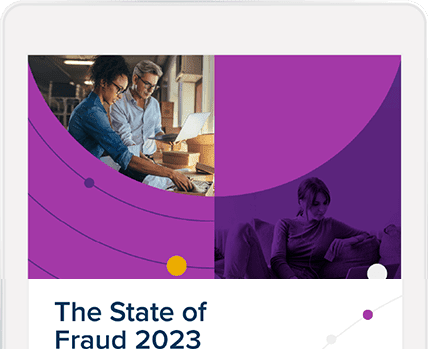Since the pandemic, the explosion of easy online shopping and free returns has backfired somewhat on ecommerce merchants, who see profits imploding with every return – whether it’s honest or fraudulent. The cost of processing an online return averages 21% of an order’s value, with some merchants losing even more, says a survey of 168 retailers by Pitney Bowes. These losses have sent merchants scrambling for a return policy that will lure shoppers and ward off fraudsters.
Last year, in-store and online returns totaled $743 billion (14.5% of sales), of which $101 billion (13.7%) was lost to return abuse and fraud. For every $100 in returned merchandise, retailers lose $13.70 to refund abuse, according to a survey published by the National Retail Federation. Combating these losses through effective return optimization not only safeguards profitability but also elevates the customer experience.
Tightening up free and easy return policies is fraught with peril
Tightening an abuse return policy to prevent return fraud and lessen losses is an option for ecommerce merchants, but it’s tricky. Making returns difficult or expensive for consumers appears to be a losing proposition.
For most online shoppers there’s no turning back. They’ve become spoiled with easy returns: In a recent survey by the International Council of Shopping Centers (ICSC), 82% of shoppers said a return policy determines where they purchase.
And a Signifyd consumer survey found that more than 80% of online consumers polled said they would shop more often with a retailer based on a good return experience. By the way, in the same survey, 75% said they would stop shopping with a retailer based on a bad return experience.
In the ICSC survey cited above, nearly three-fourths of the 1,012 respondents said they’d stop shopping online from a company that charged a fee to ship back a purchase, while more than half said they’d quit shopping online with a retailer if that retailer shortened a free return window.
Drive profits by knowing your customers
To successfully minimize refund abuse, retailers need the help of technology to provide insight into the identity and intent behind each return request. Who is returning the item? Is there a history of ecommerce returns? What does that history look like?
Signifyd CEO Raj Ramanand, speaking at the company’s FLOW Summit 2024, stressed the importance of ecommerce focusing on personalization and maximum trust to build customer loyalty and achieve profitable growth.
“A delightful customer experience consists of two things,” he said. ‘’One, I as the retailer, as the brand, have to trust who that person is. And two, once I can do that, I need a way in real time, at the moment when someone is making a return, when someone is checking out, at that moment, I need to be able to personalize that experience.”
How minimizing future returns can improve revenue
Allyiz co-founding partner Catherine Tong explains why first-party fraud and bad acts like return abuse are on the rise. And she goes into the challenges around trying to put a stop to return and refund abuse in the Fraud Fighter Minute video below.
Providing a return policy that grants goodwill to customers and says good riddance to fraudsters is a tough balance to strike. Retail experts offer several tips to craft a balanced return policy, but in a climate where shoppers have enjoyed carte blanche, experts say that merchants need the help of technology to be successful.
How can I stop returns abuse without losing customers?
Understanding the identity and intent behind each return request is the key to achieving the trust and personalization that Ramanand talks about. Achieving that understanding requires technology to analyze patterns of potential abuse and fraud among those buying online. Signifyd’s Decision Center is an automated system that considers the return requester’s history on a network of thousands of retailers. It factors in other details of the return transaction to rate the return as high, medium or low risk. Based on that assessment it automatically responds with a range of actions from issuing an immediate refund even before the product is received, providing a store credit, withholding a refund until the product is received and inspected, or denying the return.
Also, given Signifyd’s extensive network of retailers, Decision Center can pick up signals related to a return request even from a customer returning an item to a particular merchant for the first time. For instance, the program might see red flags related to that first-time returner from transactions at other stores. Having that insight allows appropriate proactive action based on a merchant’s particular policies.
By partnering with technology, a merchant can be comfortable that it is applying the right amount of friction or lack of it for each return request.
How some policies set up companies for scams and revenue loss
It’s become commonplace among online shoppers to buy more than one version of a product, such as the same style blouse in different colors, sizes or patterns, then try them on at home and return the garments that don’t work. It’s innocent enough, right?
After all, that’s the process in a brick-and-mortar store: Hold up the blouse in the mirror, check the color, shake your head yes or no, and return the losers to the rack.
Is return abuse fraud?
Most shoppers don’t think the practice of buying a lot and keeping a little is return abuse, but there’s even a name for it, bracketing, and it could violate a merchant’s policies. Then there is wardrobing, an even more egregious practice, when shoppers buy a product, keep the tags on, use it or wear it, and return it.
Of shoppers who admitted to overbuying online, 87% said they were engaging in bracketing when they did so, according to the ICSC survey, with nearly half of all retailers saying wardrobing is a problem.

The list goes on and some scams fall more clearly into the area of fraud. One of the most common fraudulent refund practices is when a buyer claims that an item wasn’t received when it was, or says the item was irrevocably damaged, when it wasn’t. Of course these fulfillment fails do happen. But in a Signifyd survey of 2,010 shoppers, nearly 13% who filed credit card chargebacks falsely claiming an item was not received said they felt justified because “the company I purchased from is very successful and wouldn’t miss the amount of my purchase.’’
Well, apparently, companies do notice: Saks CEO Marc Metrick said recently that return fraud was a growing problem, according to U.S. News & World Report.
Some return abuse is definitely fraud
And there are even more devious return abuse schemes that clearly constitute fraud. These tactics include returning stolen merchandise, using counterfeit receipts, organized crime scams and shipping back a different item than received – sometimes just an empty box, or a box filled with rocks. Another scam is cross-retailer returns, also known as price arbitrage, where a product is bought for less, maybe on sale, then taken to a competitor which sells the same product for more money. The tag is switched and the lower-cost product is returned to the competitor for more money.
Tuckernuck CFO Emilie MacFarlane and Saks COO RJ Cilley joined Signifyd’s Indy Guha on stage at FLOW Summit 2024 to talk about the growing challenge and potential opportunities of online returns.
In this clip from the conversation, MacFarlane and Cilley dig into return scams and preview some ideas to help brands get ahead of the challenge. See the whole presentation at the FLOW on-demand page.
Lurking about are professional fraud rings, such as the one that recruited legitimate shoppers to cooperate with purchasing merchandise and, using various methods during the return process, scammed retailers out of millions. They got caught, eventually.
Actionable tips to make your return policy work for you
There are steps merchants can take to cut down on fraudulent returns or prevent return fraud altogether. Some of these steps are technical, others are strategic and still others are operational.
How can I minimize returns abuse?
- Look for innovation aimed at return-abuse protection: Return abuse technology, such as Signifyd’s Decision Center, can determine the level of risk behind a return request and add the appropriate amount of friction to deter those bent on return abuse. More importantly, it can provide immediate refunds for a merchant’s best customers, thereby improving their experience and increasing their customer lifetime value.
- Have a clear return policy: Publish a very clear and accessible return policy prominently on the website. The policy should include details on processing time for returns, when consumers should expect a refund, and any applicable fees. Some retailers have begun to charge a nominal fee for returns and shipping fees. While this is understandable, and a deterrent, it’s a fine line to walk with customers who want free and easy returns.
- Incentivize in-store returns: Online retailers who have brick-and-mortar stores have a better chance of implementing a tighter online return policy requiring fees or shipping costs if shoppers can return items for free in-store, where an employee can better authenticate the product and the person. The ICSC survey found that 79% of consumers are open to returning an online purchase in the retailer’s store if they would be charged for online returns. And 77% said they would go to a retailer’s store to make a purchase instead of online if they were charged for returning items online. The average return rate for online shopping is three times that of in-store: 15.2% to 5%, says ICSC. For some verticals, the difference is much more dramatic.
- Implement a “no label, no box” policy: This approach has the customer taking the return to a shipping agency, which boxes and labels it. Customers may believe this service is a convenience for them, and it can be, but it also allows the shipper to verify there’s an actual product being returned instead of an empty box or a decoy product.
- Free shipping: Merchants should think carefully about offering free shipping only for orders over a certain dollar amount. That encourages a shopper to add extra and unwanted products to an order just to get the shipping discount, only to return the excess products. It’s counterproductive for a retailer, who needs to weigh the cost of shipping against the cost of the return.
- Invest in virtual try-on and detailed sizing charts, color-accurate graphics and photos, including 360-degree product views, lots of customer reviews and how-to videos. The more the better for online shoppers to make accurate purchases. Provide sharp and accurate close-ups of fabrics.
- Test drive return policies before implementing them company-wide.
- Keep it!: Consider this policy in which merchants allow customers to keep a purchase rather than return it. While these policies have gained popularity in some quarters, consider the potential they have for encouraging customers to claim a perfectly good product is somehow defective.
Feature photo by Getty Images
Want to get a handle on your returns challenges? We can help.








